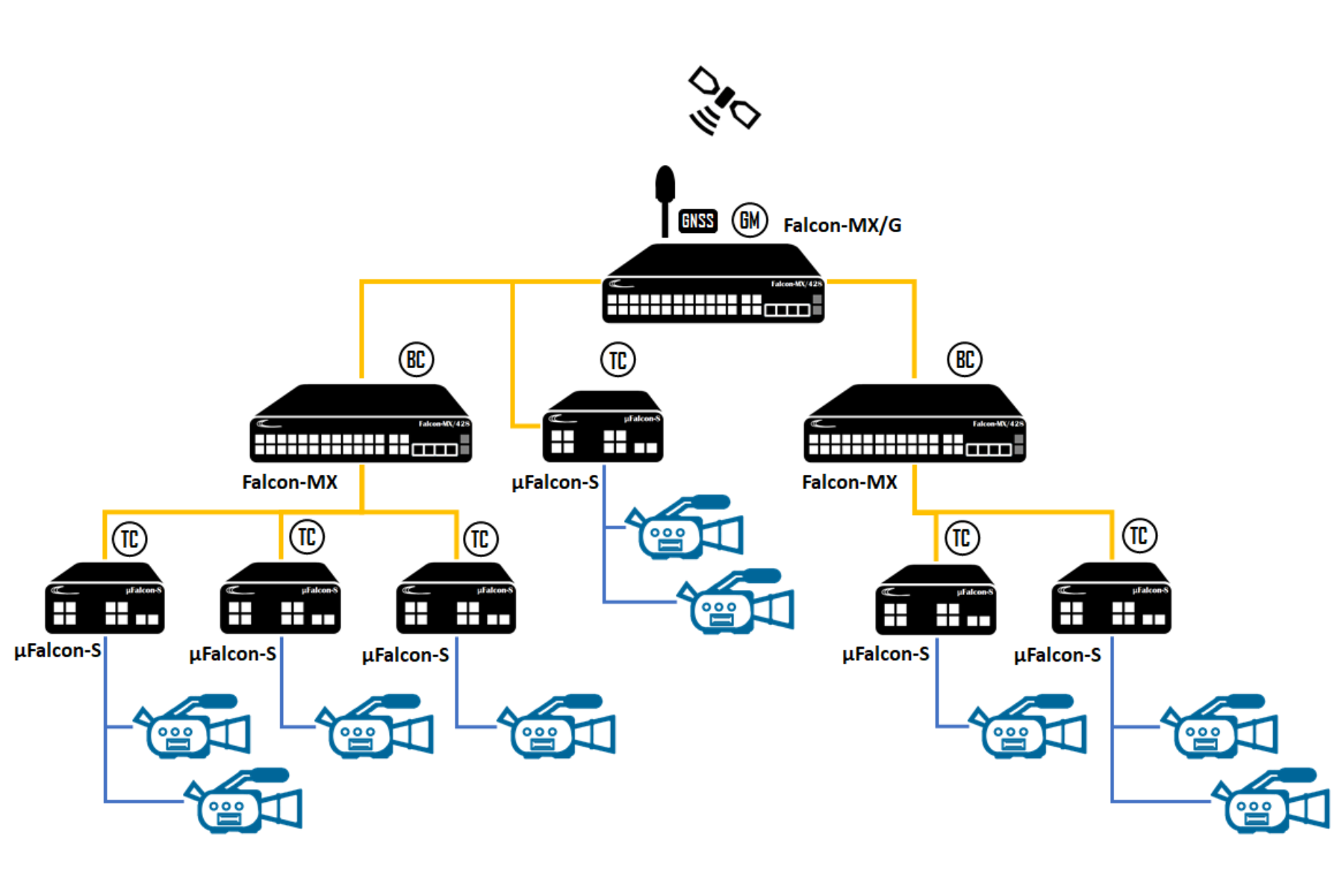Broadcast
The comprehensive and total transition from ASI to IP is not a prediction anymore. Driven by the demand for HD 4k/8K , streaming Video and digital content, It started at the very beginning of the century and is moving full steam ahead once the industry realized that the flexibility, quality, growth potential and reduced CAPEX and OPEX offered by IP based networks are winning by far over all other platforms. However, this comes at a cost.
IP based networks are bi-directional, primarily not synchronized, varying latencies, asymmetric path delays and more.it is enough to recall that Video applications require a timing accuracy of about 1µsec to understand the challenge, and it has been clear that new technologies need to be developed or adopted and appropriate standards written.
This has been addressed by the SMPTE ST 2059. Its first part refers to the ToD (Time of Day) formatting while the second part adopts the IEEE1588 v2 PTP (Precision Time Protocol) with the purpose to ensure that any new slave introduced into the network shall synchronize, within 5 seconds, to an inter-slave accuracy of 1µsec or less. It should also be noted that the IEEE1588 alone does not turn an originally asynchronous IP network into a synchronous one.
Consequently – a modern Broadcast transmission network, maintaining good Video quality, stability and growth potential must comprise of building blocks of sufficient capacity, support SyncE and fully support PTP including all types including Grand Master, Boundary, Transparent and Slave.
Fibrolan’s Falcon-MX and Falcon-MTS series fully supports SyncE, IEEE1588v2 (all clock types), Grandmasters include atomic clocks which ensure more than 1 week of holdover, switching capacities of up to 160Gbps and transmission rates from 100M/Gb/2.5Gb to 10Gb. The variety of models available allows easy and cost effective “LEGO-like” design and implementation.


